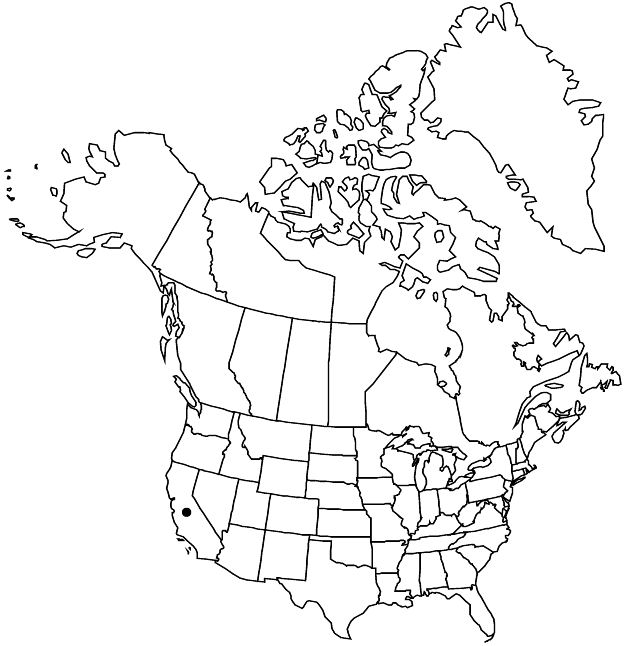Sidalcea robusta
Ann. Missouri Bot. Gard. 18: 205. 1931.
Herbs, perennial, (0.5–)0.8–1.2(–1.8) m, glaucous, with caudex and usually well-developed rhizomes to 0.5 mm diam. Stems often single, usually scattered, erect, usually unbranched, solid or somewhat hollow in age, proximally densely, finely stellate-hairy, hairs spreading, distally glaucous, glabrous. Leaves cauline, mostly on abaxially, bristly-hirsute adaxially. Inflorescences erect, open, calyces not conspicuously overlapping except sometimes in bud, usually unbranched, loosely 10+-flowered, flowers 1+ cm apart, elongate, sometimes 1-sided, 30–40(–45) cm; bracts inconspicuous, lanceolate to linear, distal unlobed, 2–4 mm, proximal divided ± to base, 4–6 mm, usually equaling or shorter than pedicels. Pedicels 2–5 mm; involucellar bractlets absent. Flowers usually bisexual, sometimes pistillate, plants gynodioecious; calyx 10–15 mm, uniformly, densely stellate-puberulent; petals: bisexual pale pink, often drying yellowish, pale-veined or not, base pale pink to white, (15–)20–35 mm, pistillate usually darker purple, base white, 5(–10) mm; staminal column 6–8 mm, hairy; anthers white; stigmas (6 or)7 or 8. Schizocarps 6–8 mm diam.; mericarps (6 or)7 or 8, 3–3.5 mm, usually glabrous or very sparsely glandular-puberulent, distinctly narrowly wing-margined dorsally, sides lightly reticulate-veined, pitted, back less so, mucro 0.3–0.5 mm. Seeds 2–2.5 mm. 2n = 20.
Phenology: Flowering Apr–May(–Jun).
Habitat: Dry banks in chaparral at ecotone with foothill woodlands, often basaltic soil, with Quercus douglasii
Elevation: 100–400(–1300) m
Discussion
Of conservation concern.
Sidalcea robusta is one of the taller species of Sidalcea and can be distinguished also by its relatively long inflorescences with widely-spaced, showy flowers, its limited range, and its winged mericarps are notable. Rare and threatened by development, it is known from Butte County in the southern Cascade Range foothills and the northern Sierra Nevada foothills.
Selected References
None.
